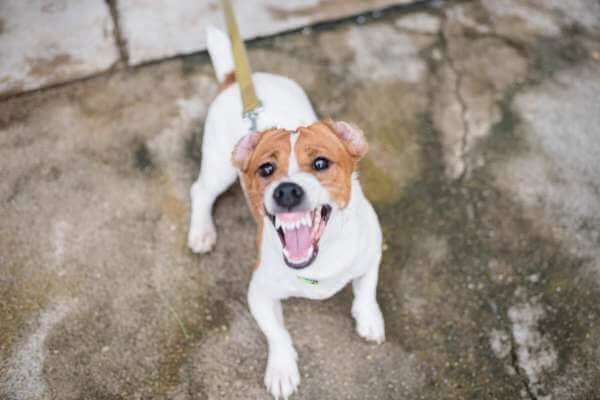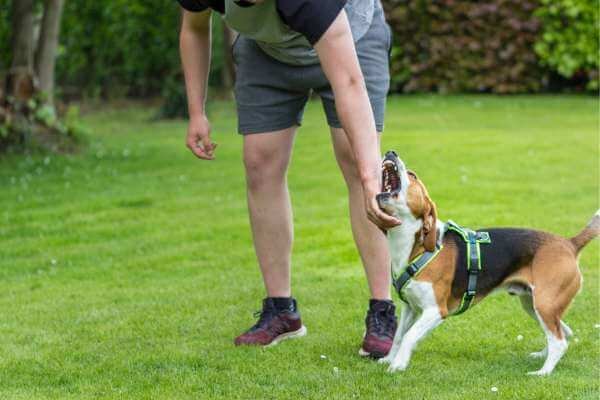Beagles are one of the most popular dog breeds in the world, known for their friendly, curious, and loyal personalities. They are also very cute and adorable, with their floppy ears, expressive eyes, and tri-colored coats. But are beagles aggressive dogs?
The answer is not so simple, as beagles have both strengths and weaknesses when it comes to aggression. On the one hand, beagles are very intelligent, eager to please, and responsive to positive reinforcement. They can learn a variety of commands, tricks, and skills, and they enjoy mental stimulation and challenges. On the other hand, beagles are also very independent, stubborn, and easily distracted. They have a strong sense of smell and a high prey drive, which can make them ignore their owners and chase after anything that catches their nose. They can also be vocal, barking or howling at anything that excites them.
Therefore, aggression in beagles is not a fixed trait, but a behavior that can be influenced by various factors, such as genetics, environment, training, socialization, health, and stress. Aggression can also be directed towards different targets, such as humans, other dogs, or other animals. In this article, we will explore the causes, signs, types, and solutions of beagle aggression, and how to prevent and manage it effectively.
Causes of Beagle Aggression

There are many possible causes of beagle aggression, and each case may have a different combination of factors. Some of the most common causes are:
- Dominance: Beagles may be aggressive to humans (often within the family) or other dogs when they believe they are the alpha of the pack or the household. This is because beagles have a pack mentality, and the alpha dog may use aggression to show other members their place. Dominance aggression can be triggered by situations such as feeding, grooming, playing, or sleeping, where the beagle may feel challenged or threatened by someone or something.
- Fear: Beagles may be aggressive out of fear when they feel frightened or threatened by someone or something. Fear aggression can be caused by lack of socialization, traumatic experiences, loud noises, unfamiliar people or animals, or sudden movements. Fear aggression can be unpredictable and dangerous, as the beagle may bite or attack without warning.
- Pain: Beagles may be aggressive when they are in pain, due to injury, illness, or old age. Pain aggression can be caused by physical discomfort, such as arthritis, dental problems, ear infections, or skin allergies. Pain aggression can be difficult to detect, as the beagle may not show obvious signs of pain, such as limping or whining. Pain aggression can be provoked by touching, moving, or examining the beagle, or by anything that increases the pain level.
- Possessiveness: Beagles may be aggressive when they are possessive of their food, toys, treats, or territory. Possessive aggression can be caused by scarcity, competition, or insecurity. Possessive aggression can be triggered by approaching, touching, or taking away the beagle’s valued resource, or by invading the beagle’s space or territory.
- Frustration: Beagles may be aggressive when they are frustrated, due to boredom, lack of exercise, or lack of attention. Frustration aggression can be caused by insufficient physical and mental stimulation or unmet needs or expectations. Frustration aggression can be expressed by barking, biting, chewing, digging, or escaping.
Signs of Beagle Aggression
Beagles may show different signs of aggression, depending on the cause, type, and intensity of the aggression. Some of the most common signs are:
- Growling: Beagles may growl to warn or threaten someone or something that they perceive as a potential threat. Growling can be a low, deep, or rumbling sound, or a high-pitched, snarling sound. Growling can be accompanied by showing teeth, snarling, or snapping.
- Barking: Beagles may bark to alert or alarm someone or something that they perceive as a potential threat. Barking can be a loud, sharp, or continuous sound or a low, harsh, or intermittent sound. Barking can be accompanied by lunging, jumping, or chasing.
- Biting: Beagles may bite to defend or attack someone or something that they perceive as a potential threat. Biting can be a quick, gentle, or playful nip or a hard, fast, or vicious bite. Biting can be accompanied by shaking, tearing, or ripping.
- Body Language: Beagles may show different body language to indicate their aggression. Some of the most common body languages are:
- Ears: Beagles may flatten their ears back against their head, or erect their ears forward or sideways, to show their aggression.
- Eyes: Beagles may stare intensely, or show the whites of their eyes, to show their aggression.
- Mouth: Beagles may open their mouth wide, or curl their lips, to show their aggression.
- Tail: Beagles may wag their tail slowly or stiffly, or tuck their tail between their legs, to show their aggression.
- Posture: Beagles may stand tall, or crouch low, to show their aggression. They may also lean forward, or back away, to show their aggression.
Types of Beagle Aggression

Beagles may show different types of aggression, depending on the target, motive, and context of the aggression. Some of the most common types are:
- Human-Directed Aggression: Beagles may be aggressive towards humans, either within or outside the family. Human-directed aggression can be caused by dominance, fear, pain, or possessiveness. Human-directed aggression can be triggered by handling, disciplining, grooming, or feeding the beagle, or by invading the beagle’s space or territory. Human-directed aggression can be dangerous and harmful, as the beagle may bite or attack the human, causing injury or infection.
- Dog-Directed Aggression: Beagles may be aggressive towards other dogs, either within or outside the household. Dog-directed aggression can be caused by dominance, fear, pain, or possessiveness. Dog-directed aggression can be triggered by meeting, playing, or fighting with other dogs, or by competing for resources or attention. Dog-directed aggression can be problematic and stressful, as the beagle may bark, growl, or bite the other dog, causing injury or conflict.
- Animal-Directed Aggression: Beagles may be aggressive towards other animals, such as cats, birds, or rodents. Animal-directed aggression can be caused by prey drive, fear, pain, or possessiveness. Animal-directed aggression can be triggered by seeing, smelling, or hearing other animals, or by chasing or hunting them. Animal-directed aggression can be troublesome and destructive, as the beagle may kill or injure the other animal, causing loss or damage.
Solutions for Beagle Aggression

Beagle aggression can be prevented and managed by using various solutions, such as training, socialization, health care, and environmental modification. Some of the most effective solutions are:
- Training: Beagles can be trained to reduce or eliminate their aggression, by using positive reinforcement, such as treats, toys, praise, and attention. Training can teach the beagle to obey commands, such as sit, stay, leave it, or drop it, to control their impulses and behavior. Training can also teach the beagle to associate positive outcomes with the source of their aggression, such as humans, dogs, or animals, to reduce their fear or hostility. Training should be started early, consistent, and fun, to ensure the beagle’s learning and cooperation.
- Socialization: Beagles can be socialized to reduce or eliminate their aggression, by exposing them to different people, dogs, and animals, in a safe and controlled manner. Socialization can help the beagle to become familiar and comfortable with the source of their aggression, and to learn appropriate and acceptable behavior. Socialization should be started early, gradually, and positively, to ensure the beagle’s confidence and enjoyment.
- Health Care: Beagles can be provided with proper health care to reduce or eliminate their aggression, by visiting the vet regularly, getting vaccinated, spayed, or neutered, and treating any injury or illness. Health care can help the beagle avoid or relieve any pain or discomfort that may cause their aggression. Health care can also help the beagle to balance their hormones and emotions that may affect their aggression.
- Environmental Modification: Beagles can be given a suitable environment to reduce or eliminate their aggression, by providing them with enough space, exercise, stimulation, and attention. Environmental modification can help the beagle avoid or release any boredom, frustration, or stress that may cause their aggression. Environmental modification can also help the beagle to feel safe, secure, and happy in their surroundings.
Conclusion of Are Beagles Aggressive
So are Beagles aggressive dogs? Beagles are not aggressive dogs by nature, but they may become aggressive in certain situations or circumstances. Beagle aggression can be caused by various factors, such as dominance, fear, pain, possessiveness, or frustration. Beagle aggression can be shown by different signs, such as growling, barking, biting, or body language. Beagle aggression can be directed towards different targets, such as humans, dogs, or animals. Beagle aggression can be prevented and managed by using different solutions, such as training, socialization, health care, or environmental modification.
Beagles are wonderful dogs that can bring joy and love to their owners and families. By understanding, preventing, and managing their aggression, you can ensure a harmonious and happy relationship with your beagle.

